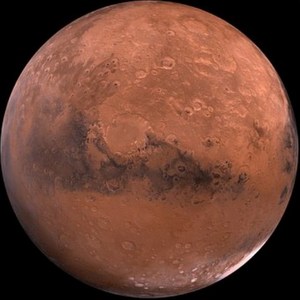Samara National Research University scientists have developed a software package to control a solar sail spacecraft on a mission to Mars. The solution enables a change in the trajectory of the spacecraft without the use of orientation engines – the program can navigate the spacecraft on a given course by controlling the transparency of the solar sail.
Such control helps save engine fuel for other mission tasks and makes a spacecraft with solar sails prospectively more “energy independent” and capable of longer flights without regard to the fuel reserves – because a solar sail will provide not only acceleration, but also effective steering in space.
“Our department has developed a software package that helps solve the problems of controlled motion of a spacecraft with a solar sail during its flight from an Earth orbit to a Mars orbit. The package will enable the spacecraft to follow the pre-set trajectory toward the destination and, if necessary, adjust the course without using conventional orientation engines – the trajectory can be changed because the sail has special areas with variable reflectivity,” says Professor Olga Starinova, head of the Department of Flight Dynamics and Control Systems of Samara University.
These areas are called control surfaces and are strips of liquid crystal film placed along the sides of a square solar sail. Under the influence of electric current that is turned on at a certain moment of flight, the ability of such a strip to reflect sunlight varies: it can become almost completely transparent to light or almost completely reflective. The sunlight pressure on the strip changes accordingly. That is, depending on the degree of transparency of a strip, the light presses on different sides of the sail with different force, and the spacecraft turns in the necessary direction. It is as if on an ordinary earth sailboat, a turn of a helm would make one or the other side of the sails “disappear” and the wind would pass through, turning the ship without a rudder.
“By alternately turning on and off the control surfaces on the sail, the spacecraft can make turns on its interplanetary flight,” says Olga Starinova.
The program, which assumes the functions of both the space navigator and the helmsman, can work with the data for a specific space mission – size and mass of the spacecraft to be launched, solar sail area, size of the control elements on the sail, date and location of the planned launch from the Earth orbit, point in Mars orbit where the sailing ship is to arrive, and scheduled duration of flight. The software suite will calculate all necessary indicators and the flight trajectory, indicate at what moments and how exactly the transparency of the control surfaces of the sail will have to change, so that the spacecraft arrives at the predetermined point as soon as possible.
The scientists simulated flights to Mars on vehicles with sails of various sizes. Calculations have shown that, equipped with a square flat sail with an area of 200 square meters (about 14 by 14 m) and the width of the control strips of about 15–20 cm, a spacecraft can reach the orbit of Mars in 250 days; the flight duration depends on the specific location of Earth and Mars, minimum distance between the planets being 55+ million km. Calculation results were obtained for a mission to Mars, but the software package can also be used for missions to other planets.
“Of course, this suite is not being developed specifically for a Mars mission; the solution is primarily aimed at testing the very possibility of fully using this principle of space sail control without reducing the accuracy of the trajectory and without increasing the flight time - of control only using the sail without orientation engines. The idea has been successfully tested – calculations show that a spacecraft on solar sails can be controlled quite efficiently in this manner, and the flight duration is kept as minimal as if we were using orientation engines. And this can already be called a success, because thus we do not spend fuel on control, on changing the trajectory of the flight, which means that such a spacecraft is less dependent on the availability of the necessary fuel reserve on board. In other words, the spacecraft equipped with this control system is more capable to perform tasks in interplanetary missions, because it is fueled by sunlight,” emphasizes Olga Starinova.
For reference
A spacecraft with solar sails uses the pressure of sunlight or a laser beam on a solar sail as a propellant. The first interplanetary spacecraft with solar sails is the Japanese IKAROS launched into space in 2010. A solar sail with 80 liquid crystal panels was mounted on the vehicle and a pilot experiment was conducted to change the orientation of the sail relevant to the sun by dynamically controlling the reflectivity of the panels. Within about a day, Japanese scientists managed to change the angle of the sail relevant to the Sun by almost half a degree, which was deemed a successful result. IKAROS used conventional orientation control engines to correct the trajectory of the flight outside the experiment.
Image: pixabay.com
